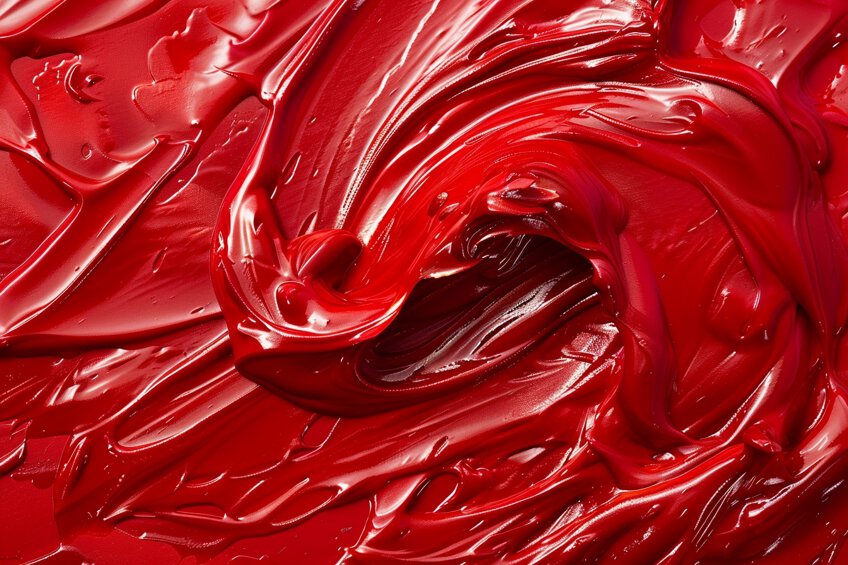Meaning of the Color Scarlet – A Color Charged With Emotion
Step into the lively realm of color investigation, where shades communicate volumes without the need for verbal expression. Today, we dive into the passionate depths of scarlet, a color that ignites fires of emotion and captivates the eye with its bold intensity. Scarlet dances between the realms of red and orange, embodying energy, warmth, and a hint of mystery. From regal robes to ripe strawberries, scarlet weaves its enchanting tale through history, culture, and the human psyche. Join us on a journey to unravel the captivating meaning behind the color scarlet and uncover the secrets it holds within its radiant depths.
Table of Contents
Key Takeaways
- Scarlet is a symbol of passion, power, and urgency.
- Its historical role denotes significance in religious and societal contexts.
- The color has strong psychological impacts on design and aesthetics.
Historical Significance of Scarlet
| Shade | Hex Code | CMYK Color Code (%) | RGB Color Code | Color |
| Scarlet | #FF2400 | 0, 100, 100, 0 | 255, 36, 0 |
Scarlet carries with it a myriad of meanings and associations that are deeply ingrained in various facets of human culture and psychology. This vibrant color, which lies on the spectrum between red and orange, is universally recognized as a symbol of fervor and vivacity. In its embrace, scarlet encapsulates the primal forces of love and desire, often invoking a sense of urgency and prominence.

Historically, scarlet has been a color of significance and power, donned by the leaders and influencers within society. Its presence in religious and ceremonial garb points to its longstanding association with sacrifice and devotion. Today, the use of scarlet continues to evoke strong psychological responses, influencing behavior and perceptions in design, art, and fashion, offering a bold statement that never goes unnoticed.
Religious and Mythological Associations
In religious contexts, scarlet has been a color of major importance, particularly in Christianity. The hue is frequently mentioned in the Bible and is associated with the blood of Christ and Christian martyrs, symbolizing sacrifice and redemption.
The Catholic Church has utilized scarlet in the vestments of cardinals, representing their willingness to defend the faith unto death.
- Biblical symbolism: Scarlet is mentioned in the Book of Revelation as a color worn by a figure representing Babylon, symbolizing wealth and sin.
- Religion: It also appears in the Old Testament, in the description of the Tabernacle, where scarlet yarn is used, often interpreted as a prefiguration of the Blood of Christ.
Historical Use in Fashion and Art
Historically, scarlet was a color reserved for the elite, especially in Ancient Rome and during the Middle Ages. The expense of producing the dye made it a symbol of status and wealth, often worn by royalty and high-ranking officials.
- Ancient Rome: Roman senators and generals wore togas with a scarlet stripe, reflecting their authoritative role in society.
- Middle Ages: In medieval times, scarlet clothing was a display of social status, and laws sometimes restricted its wear to the nobility.
- Fabric quality: The quality of scarlet fabric was so high that the color became synonymous with the finest cloths.

Literature and Symbolism
Scarlet has permeated literature, imbuing narratives with its symbolic richness. Nathaniel Hawthorne’s The Scarlet Letter uses scarlet as a symbol of adultery, shame, and ultimately, resilience and strength.
- The Scarlet Letter: Hawthorne’s work exemplifies scarlet’s role in literature as a marker of identity and a carrier of deep symbolism. The protagonist, Hester Prynne, is forced to wear a scarlet ‘A’ for adultery, which over time, becomes a symbol of her individuality and experience.
- Symbolism: Beyond Hawthorne’s novel, scarlet in literature often signifies passion, courage, and sometimes danger, reflecting its long-standing historical associations.
The Meaning of the Color Scarlet
Scarlet is a prominent color that carries a multitude of meanings, ranging from the vigor of passion and love to the intensity of courage and strength.

Positive Associations
- Courage and strength: Scarlet is commonly connected with qualities such as courage and tenacity, due to its vibrant and intense hue.
- Energy and passion: This color often signifies love, desire, and strong emotions, embodying an energetic and dynamic character.
Negative Associations
- Sin and vice: In historical and religious texts, scarlet can represent sinfulness and moral degradation.
- Aggression and danger: Its bright red shade is also associated with warnings and the need for alertness, being seen as a color signifying caution.

Personality Traits Associated With Scarlet
Individuals who resonate with scarlet often exhibit a range of distinctive personality traits. These traits are characterized by their intensity and depth, reflecting the vibrancy of the scarlet hue. Those drawn to scarlet tend to be passionate, not just in romantic endeavors but in all areas of life. Their fervor is palpable, fueling their pursuits and interests with an unmistakable vigor.
Scarlet is synonymous with a strong will. Admirers of this color frequently display an unwavering determination to achieve their goals, undeterred by obstacles.
There is a certain boldness that scarlet exudes, often reflected in the confidence of those who favor it. They typically approach life with a self-assuredness that is as commanding as the color itself. Leadership is another trait commonly found in those associated with scarlet. Their natural inclination towards taking charge can be attributed to the color’s historical ties to royalty and authority.

Individuals who gravitate towards scarlet are often dynamic and enjoy leaving a lasting impact on their surroundings. Their presence is marked by a sense of urgency and a dynamic approach to life’s challenges. In summary, scarlet is not just a color but an embodiment of certain personality traits. Its association with ardor, confidence, and determination makes it a powerful presence in the realm of color psychology.
Scarlet in Design and Aesthetics
As a vivid and emotionally charged color, scarlet asserts its presence in various design and aesthetics fields. It’s a hue that demands attention, stimulates the senses, and conveys an array of powerful messages.

Interior Decorating and Color Theory
In the realm of interior design, scarlet can invigorate spaces with its vibrancy. When used strategically in living rooms or bedrooms, scarlet accents provide a statement of boldness and energy. Coupled with color theory, it introduces warmth and can modify the perceived temperature of a space, promoting a feel of coziness and comfort.
Fashion and Color Trend Influence
Scarlet has a long-standing influence on fashion, often incorporated into designs to make a bold statement. It is a color that incites sophistication and elegance, especially when worn as a statement piece. Designers use it to evoke determination and confidence in their collections, resonating with an audience that desires to stand out.

Significance in Branding and Marketing
In branding and marketing, scarlet is selected for its psychological impact—its ability to draw the eye and evoke feelings of excitement and passion. Brands often use it to portray a sense of dynamism and success, harnessing its high-visibility to ensure they leave a memorable impression.
Impact on Personality and Identity
Scarlet’s association with strength of personality and determination makes it a color that individuals often choose to display aspects of their identity. Through fashion or personal design choices, incorporating scarlet can be a form of self-expression that aligns with an individual’s sense of self and personal brand.

Color Associations and Contrasts
Scarlet is versatile and dynamic when it comes to color combinations. It pairs compellingly with neutrals for a look that is both eye-catching and balanced. In contrast setups, scarlet stands out vividly against cooler tones, defining spaces and elements with an undeniable impact.
Psychological and Emotional Aspects of Scarlet
Scarlet, a color known for its intensity on the color wheel, has a profound impact on emotions and behaviors. It is notable for conveying passion and energy, and often commands attention in various applications, from fashion to branding.

Emotional Influence and Symbolism
- Passion and desire: Scarlet is commonly associated with deep emotions such as passion and desire. It is a color that is frequently used to signify love, acting as a stimulant for the senses and the heart.
- Energy and warmth: This hue imparts an energetic quality that is both invigorating and warm. One feels a burst of energy in its presence, which is why it’s often used in branding to evoke excitement.
- Attention and danger: Due to its high visibility, scarlet is used to attract attention and signal danger or caution. Its use in warning signs and signal flags is a testament to its prominent psychological effect.
Scarlet’s strong associations can elicit powerful psychological responses, varying from attraction to alarm, making it a crucial color in marketing and communications strategies.
Cultural Significance
- Luxury and confidence: In the realm of luxury and high fashion, scarlet represents sophistication and confidence. Brands often incorporate scarlet into their logos and designs to project these qualities.
- Sin and warning: Historically, scarlet has symbolized sin and moral transgression. This symbolism is present in religious texts where it represents both sinfulness and the blood of martyrdom.
- Cultural associations: Culturally, scarlet hues may be linked with prosperity and good fortune, especially in Eastern societies, contrasting the Western connotations of alarm or seduction.

The emotional reach of scarlet is broad, influencing its role in cultural traditions and artistic expressions. The color’s hex code, relevant to digital design, captures its vibrancy in the exact form needed for precise color palettes in digital and print media. Complementary colors to scarlet on the color wheel create striking contrasts, often used in design to further enhance its psychological impact.
As we draw our exploration of scarlet to a close, we find ourselves immersed in a tapestry of passion, power, and possibility. Scarlet, with its fiery allure and magnetic charm, has woven its way into the very fabric of our existence, leaving an indelible mark on cultures, emotions, and artistry throughout history. From the bold strokes of artists’ canvases to the delicate threads of fashion and design, scarlet stands as a testament to the boundless creativity and expression of the human spirit. So, as we bid farewell to this captivating hue, let us carry with us the fiery spirit of scarlet, embracing its vibrancy and vitality in every aspect of our colorful journey through life.
Frequently Asked Questions
How Is the Color Scarlet Interpreted in Religious Texts or Spiritual Beliefs?
In religious contexts, particularly within the Bible, scarlet symbolizes sin and moral failings. The association is likely due to the color’s vibrancy and the difficulty of removing the stain, which metaphorically speaks to the persistence of sin.
What Psychological Impacts Does the Color Scarlet Have on Perception and Emotions?
Scarlet is associated with strong emotions, including passion, heat, and intensity. Psychologically, it can evoke feelings of excitement and urgency, and is often used to attract attention in various settings due to its bold nature.
How Do Authors and Literary Figures Commonly Use the Color Scarlet as a Symbol?
Literary figures often use scarlet as a symbol to denote passion, danger, or sin. For instance, in Arthur Conan Doyle’s A Study in Scarlet, it represents the bloodshed and drama central to the novel’s mystery. Scarlet can also signify a character’s fall from grace or a dramatic event within a narrative.
In 2005, Charlene completed her Wellness Diplomas in Therapeutic Aromatherapy and Reflexology from the International School of Reflexology and Meridian Therapy. She worked for a company offering corporate wellness programs for a couple of years, before opening up her own therapy practice. It was in 2015 that a friend, who was a digital marketer, asked her to join her company as a content creator, and this is where she found her excitement for writing.
Since joining the content writing world, she has gained a lot of experience over the years writing on a diverse selection of topics, from beauty, health, wellness, travel, and more. Due to various circumstances, she had to close her therapy practice and is now a full-time freelance writer. Being a creative person, she could not pass up the opportunity to contribute to the Art in Context team, where is was in her element, writing about a variety of art and craft topics. Contributing articles for over three years now, her knowledge in this area has grown, and she has gotten to explore her creativity and improve her research and writing skills.
Charlene Lewis has been working for artincontext.org since the relaunch in 2020. She is an experienced writer and mainly focuses on the topics of color theory, painting and drawing.
Learn more about Charlene Lewis and the Art in Context Team.
Cite this Article
Charlene, Lewis, “Meaning of the Color Scarlet – A Color Charged With Emotion.” Art in Context. March 8, 2024. URL: https://artincontext.org/meaning-of-the-color-scarlet/
Lewis, C. (2024, 8 March). Meaning of the Color Scarlet – A Color Charged With Emotion. Art in Context. https://artincontext.org/meaning-of-the-color-scarlet/
Lewis, Charlene. “Meaning of the Color Scarlet – A Color Charged With Emotion.” Art in Context, March 8, 2024. https://artincontext.org/meaning-of-the-color-scarlet/.









